Remember how I had that massive series of Venezuela-Iran posts all queued up? Well, this is convenient.
There are two separate stories in Spanish-language media based on leaks from the United States providing lots of gory details about Iran-Venezuela cooperation on Unmanned Aerial Vehicles (UAVs).
Here is what happened: Conservative Spanish news outlet ABC.es (not to be confused with the American Broadcasting Company) reported that the New York Attorney General is investigating the sale of UAVs from Iran to Venezuela.
The Attorney General of New York? As best I can make out with my schoolboy Spanish, the US is interested in a pair of financial transactions. Compañía Anónima Venezolana de Industrias Militares (CAVIM) — Venezuela’s state-controlled defense firm — paid $28 million to Iran’s Aerospace Industries Organizations (AIO) through a bank in Frankfurt. The Iranians kicked back $2.8 million to a Venezuelan company called COMARVEN, which purportedly constructed two hangers and control center somewhere near the Venezuelan city of Maracay. The documents also indicate, according to ABC.es, some sort of shipment to CAVIM from Kimia Sanaat, a front-company for a sanctioned entity, that previously attempted to procure sensitive items in Germany for Iran’s UAV program (Wikileaks cable).
There are some questions about the remaining $25 million, given the small number (6-12) of UAVs. Did Venezuela buy something else? The sources seem to imply that perhaps the contract was for more than UAVs, based on the funds and the large number (70) of shipping containers on site. ABC.es mentions an Iranian side project of restricted access. More on that thought at the end.
El Nuevo Herald — the Miami Herald’s Spanish-language sister publication — received a second leak, presumably of the same documents. (The story references a Venzuelan subcontractor, presumably COMARVEN.) El Nuevo Herald emphasized different details — focusing on an Iranian national, Ramin Keshavarz, who purportedly manages the Venezuelan UAV effort. El Nuevo Herald, too, quotes a “source” referring to “other teams” of Iranians entering the country. El Nuevo Herald also published four interesting images.
As a result of the media coverage, Chavez confirmed the UAV program and arranged for CAVIM to host a little dog-and-pony show in Maracay (video above).
The flood of little details are very helpful in filling out a picture of Iran’s activities in Venezuela, starting with Maracay.
1.
CAVIM Maracay
CAVIM has two major industrial facilities — one for metalworking (small arms, ammunition and so on) at Maracay and the other for chemicals and explosives at Morón. (We’ll probably talk about Morón tomorrow.)
Of the two, Maracay is the likely location for the UAVs, given the type of enterprises located there and the fact that Maracay is the “cradle of Venezuelan aviation.”
In January 2011, several CAVIM ammunition depots in Maracay caught fire and exploded in the middle of the night. The next day, Hugo Chavez called the fire “strange,” then explained “It’s the least that I can say about a fire that takes place at 4 am. ”
”
The explosion was awfully useful to pinpoint the CAVIM site at Maracay. Javier Serrat, our Scoville Fellow, and I spent an afternoon playing around with this. I triangulated CAVIM’s Maracay location in Google Earth using the line of site in these three videos: One looking over the Coliseo de Limón, another looking over three towers, and a third from a nearby neighborhood.
Maracay, which hosts neighboring arsenals for CAVIM and the Venezuelan military, sticks out like a sore thumb with pretty classic military signatures (backed against a mountain, tunneling, sports fields, and so on.) It even has the requisite signage on the entrance to the arsenal (below left) and CAVIM logo on the hillside (below right).
Once I located the site, I was able to use aerial video released by Venezuelan TV to survey the damage. There is a particularly nice aerial shot from a helicopter that, when integrated with Google Earth, makes lots of things clear. One thing that jumped out in the line-of-sight footage, especially over the Coliseo de Limón, was that there seemed to be two fires, marked in Areas 1 and 2.
As far as I can tell, the fire started in Area 2 — officials said the fire started in “sector D of the old arsenal” which was located “between” the Arsenal and CAVIM. That describes Area 2. (CAVIM occupies the western portion of the facility, while the military is located along the road that runs up the east side of the site.)
The four contiguous structures in Area 2 are completely obliterated in the helicopter footage, with the two structures to west looking severely damaged by a blast (notice how the damage is concentrated on the side that used to face the other, now destroyed buildings). When you watch the arsenal explode on YouTube (for example at 1:20 in this clip), it isn’t hard to believe that virtually nothing of the structures where the fire started survived.
Officials have also said that the fire started in depot B-11, ultimately consuming depots B-12, B-13, and 14. That also sounds like the four contiguous buildings in Area 2 to me, but I could be wrong.
Area 1 is about 500 meters from Area 2, but it is possible that ejecta from the initial fire fell on Area 1, initiating a second blaze. Officials found debris as much as a kilometer from the explosions. One woman was killed by shrapnel. According to one report, she lived on Avenida Una, which is at least 800 m from from Area 2 of the buildings that exploded. It seems strange to me that the warehouses in between did not catch fire, but perhaps they were empty.
I had initially thought that two fires might suggest deliberate sabotage, but the clips of debris falling all over Maracay clearly demonstrate the plausibility of secondary fires resulting from the first. Really, I am sort of surprised that even more buildings weren’t damaged.
Chavez strongly implied foreign sabotage, presumably by the United States. Some Chavez critics have suggested the explosion was to cover up the transfer of munutions to FARC before an audit of the arsenal. (FARC does appears to have acquired weapons from the arsenal at Maracay. In 2001, a demobilized FARC fighter told Andy Webb-Vidal in Jane’s Intelligence Review that rifles and other equipment came from a “supplier” in Maracay. One possible explanation of “supplier” is suggested by a July 2009 police raid in Mario Briceño Iragorry, which is a suburb of Maracay. Police raided an empty house stocked with military items, uniforms, and ammunition — including a Bofors AT4. They arrested two Colombian nationals, including a woman who had employed, er, various means to infiltrate military units, acquire the goods, and move them. Why, yes, she was a honey trap.) Although the Venezuelan government has a relationship with FARC, the emails and other information captured after the killing of a FARC commander suggests it is a complicated one, something also suggested by the 2009 police raid.
No one seems to like the accident explanation, though I usually blame Señor Murfi first. If munitions are not stored properly, they can be very, very dangerous. I don’t see much reason to imagine conspiracy when simple carelessness suffices as an explanation.
2.
The Dog-And-Pony Show
I suspect that the Dog-and-Pony Show (up at the top of this post, remember?) occurred at the same CAVIM facility that suffered the explosion–but that Venezuela’s UAV program is based elsewhere (though nearby).
Venezuelan television described the location of the dog-and-pony show as Maracay. As it turns out, Russia is building a rifle factory at the CAVIM site in Maracay. The Russian firm Energomash built a really large, new facility west of the site damaged by the explosions in 2010-2011. Notice how the ground gets cleared and foundations get placed in the ground in these two images from Google Earth?
You can see in this image that construction has continued since the explosion, in this image from (about) June 2011:
I was initially interested in this picture because it showed the post-explosion damage at Maracay, but then I realized the guy who posted it was one of the Russian engineers working on the factory for Energomash. He even kept a LiveJournal on his time in Maracay.
Let me say that again: One of the Russian engineers kept an online journal of his activities on site, including pictures of the buildings under construction. There are a bunch of pictures of the site under construction, here and here, as well as the Russian worker housing (which looks pretty miserable) in the southeast corner of the site.
I am pretty sure this steel-frame building will house the rifle factory. I also think this is the same building where the dog-and-pony show occurred. First, compare the construction shots provided by the Russian engineer to the video. Notice how the cross-pieces are the same, and the internal supports have arms on the left and right at different heights?
Second, the steel-frame building is clearly different from the two hangars and a control facility that ABC.es alleges COMARVEN built in 2010. The timing and description just don’t match. My guess is that the Venezuelans didn’t feel like showing off the actual site where UAV work occurs. Chavez, apparently, talked about both UAVs and rifle production in his comments. I can’t speak Spanish, but showing off the UAV in the still-to-be-completed rifle factory would allow Chavez to brag about both, which I gather he did.
That leaves the question of where the COMARVEN-constructed UAV hangars and control facility are located. I suspect the hangars and the control facility would be located across the highway, on El Libertador Air Base and near the School of Military Aviation. More on that in a moment.
3.
Iran-Venezuela UAV Cooperation
ABC.es is overdoing it a bit by claiming their reporting forced Chavez to reveal the UAV program. The Venezuelans weren’t keeping it a secret that they were importing UAVs like the Mohajer-2 (above, right) from Iran.
Venezuela announced the agreement to purchase UAVs from Iran in 2007, which the Defense Minister claimed would provide “muchos beneficios” for Venezuela. Lo and behold, the partner on that transaction was CAVIM. “Our goal is [for] Venezuela to be capable of manufacturing its own units in the next three to four years. We have to consider the percentage of parts to be imported, such as engines and electronic components,” Gustavo Ochoa, President of CAVIM said, according to El Universal. “We want Venezuelans to have the skills to manufacture the airplane frame and install the control command board -which are land equipment to guide the units.”
Venezuela actually debuted the Mohajer UAV in a much more restrained way — at a November 2011 air show at El Libertador Air Base. (El Nuevo Herald claims it got this photograph from “sources in Venezuela.” That sounds very cloak-and-dagger until you realize that one of the images was taken at an air show and placed on the internet. I am unsure of the source(s) of the other pictures, which may have a rather more interesting provenance.)
Chavez clearly delights in the panic incited by his various endeavors with Iran. It would be more accurate to say that ABC provided Chavez an opportunity to show off his Iranian UAVs (and to brag a bit about his rifle factory).
US State Department cables, published by Wikileaks, reveal an Iranian shipment of UAVs in violation of UNSC 1747 bound for Venezuela via Turkey (then via Germany) sometime before May 2009. There are actually three cables about this shipment, none of which are work-safe if you handle classified information:
- SHIPMENT OF UAVS FROM IRAN TO VENEZUELA (March 24, 2009)
- ADDITIONAL INFORMATION ON SHIPMENT OF UAVS FROM IRAN TO VENEZUELA (April 14, 2009)
- GERMANY INFORMED ABOUT POSSIBLE IRANIAN UAV SHIPMENT THROUGH HAMBURG (April 16, 2009)
According to one of the cables, the shipment contained Mohajer-2 unmanned aerial vehicles. The Arkenstone, a blog devoted to the Iranian military, has a nice rundown on the Mohajer family of cruise missiles.
From the cables, it is not clear whether that particular shipment made it through — although they were bound to achieve that sooner or later. The US imposed sanctions on CAVIM in May 2011, citing “credible information indicating that [it] had transferred to or acquired from Iran … equipment and technology listed on multilateral export control lists (Australia Group, Chemical Weapons Convention, Missile Technology Control Regime, Nuclear Suppliers Group, Wassenaar Arrangement) or otherwise having the potential to make a material contribution to WMD or cruise or ballistic missile systems.”
Although the State Department did not indicate what CAVIM was alleged to have done in particular, then-Deputy Secretary of State Jim Steinberg gave a presser in which he noted that the “majority of these entities or individuals were sanctioned because of proliferation activity involving Iran.” (This was the same round of sanctions in which the US sanctioned Syria’s Scientific Studies and Research Center (SSRC), most likely for Iran’s transfer of Fateh-100 ballistic missiles.)
The Wasenaar Arrangement lists UAVs, which would be enough to trigger sanctions under the Iran North Korea Syria Nonproliferation Act. Between the Venezuelan statements, the leaked cables, and the announcement of sanctions, I was sort of wondering when we’d see an Iranian UAV show up in Venezuela.
4.
UAV Facility is Probably at El Libertador Air Base
The answer was November 2011, at the 91st Anniversary of the Venezuelan Air Force (above) at El Libertador Air Base.
The image of the UAV suggests, to me, that the UAV program is based at El Libertador Air Base. I know that aircraft usually fly in for air shows, but look at the poster — the poster states that Venezuelan UAVs are flown Grupo Aereo Nº8 — which just happens to be based at El Libertador Air Base, next to a major CAVIM facility. The three other images released by El Neuvo Herald are an interesting contrast — two show terrain with a clear view of the horizon unobstructed by trees, while a third shows many trees. Assuming they were taken at the same spot, El Libertador Air Base is one of the few places that has both sorts of terrain.
I am going to go ahead and guess that post-2010 images from El Libertador Air Base will reveal the new hangars. Until then, feel free to crowd-source in the comments.
5.
A Conclusion. Sort of.
None of this gets at the real question implied by the UAV sale. The concern about 70 shipping containers? The $25 million balance on CAVIM’s payment to AIO? A mention of “other teams” of Iranian experts and side-projects? Explosives work at Morón? The real question is whether the UAV program is a harbinger of a future ballistic missile sale from Iran to Venezuela.
When ABC.es mentions an “otro proyecto militar,” they mean a ballistic missile program. I don’t know why they won’t quite say it.
At lunch last year, a friend of mine — let’s call her Lisa Simpson — got a mischievous look in her eye and asked what I thought about the reports that Iran was building a ballistic missile base in Venezuela. “Damn you,” I howled, “now I am going to be obsessed about this for days.”
“That’s why I asked,” she said, smiling.
She was referring to a pair of stories in the German newspaper Die Welt (Iran plant Bau einer Raketenstellung in Venezuela and Iranische Raketenbasis in Venezuela in Planungsphase) alleging that Iran is planning a missile base in Venezuela. You can either plug the two Die Welt articles into a translation engine or get them from the Open Source Center if you are so fortunate. The short version is this:
Western security sources told reporter Clemens Wergin in November 2010 that Venezuelan President Hugo Chavez and Iranian President Mahmud Ahmadinejad signed an agreement on 19 October 2010 to construct a joint missile base in Venezuela and co-develop ballistic missiles. Iranian and Venezuelan military personnel would man the base, according to Wergin, at which Iran would deploy Scud B (Shahab 1), Scud C (Shahab 2) and Shahab 3 ballistic missiles, as well as “four mobile launchers” (possibly a reference to either the Fateh or the new solid-fueled MRBM). Wergin also claimed that Iran and Venezuela would be begin construction, at a location to be determined, by the end of 2011. In the interim, Venezuelan officers would begin training at Sharif University in Tehran.
In May 2011, Wergin published a second story in Die Welt, also based on Western security sources, in which he made two additional claims. First, Wergin stated that a group of engineers from the IRGC-affiliated company, Khatam al-Anbia, visited a site in the Peninsula de Paraguana in February 2011. Second, Wergin stipulated that the to-be-developed missile would be a medium-range ballistic missile, which I am calling the Sin Pene. (That is Spanish for No Dong.)
The State Department seemed skeptical. “We have no evidence to support this claim and therefore no reason to believe the assertions made in the article are credible,” it said in a statement quoted by CNN. It doesn’t help that “Western intelligence sources” is a sketchy attribution, even if the author of the story — Clemens Wergin — claims his sources are totally reliable and that new sources have come forward. (Don’t they always?)
The idea that Iran might deploy missiles in Venezuela dates back to a September 2006 DEBKAfile item that claimed “Ahmadinejad also talked persuasively to Chavez about making a show of deploying a few Iranian-made 2,000-km range Shahab-3 missiles – first in Venezuela then in Cuba – as a menace to the United States.” DEBKAfile is a complicated source, as suggested by its slogan: We start where the media stop. Of course, there is a reason the media, at a certain point, stop. Beyond that point lie rumor, conjecture, and just plain paranoia — DEBKAfile’s bread and butter.
So I can’t tell you whether the rumors are true. All I can tell you is that, bad as UAVs might be, the concern about Iranian ballistic missile exports is the real context for all interest in the shady activities down south.

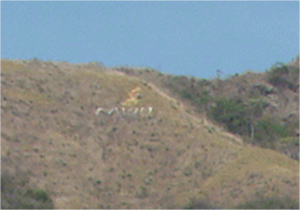
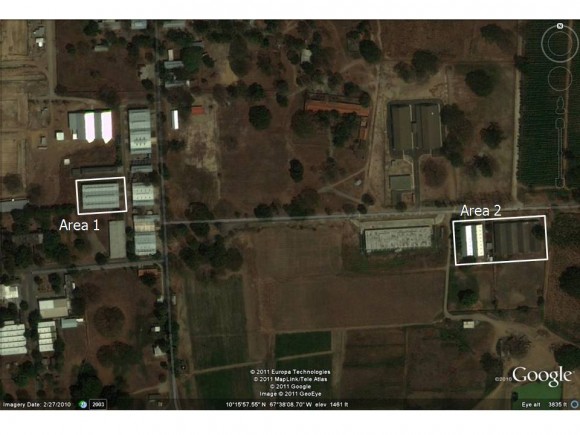


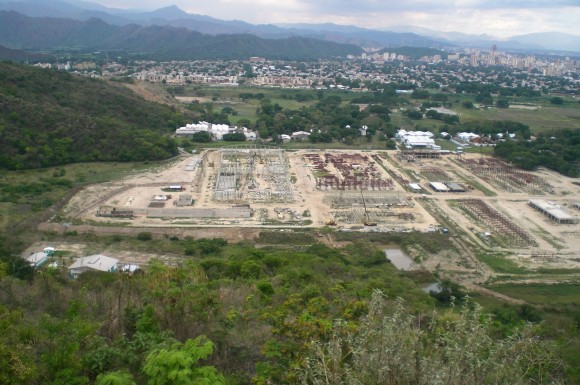
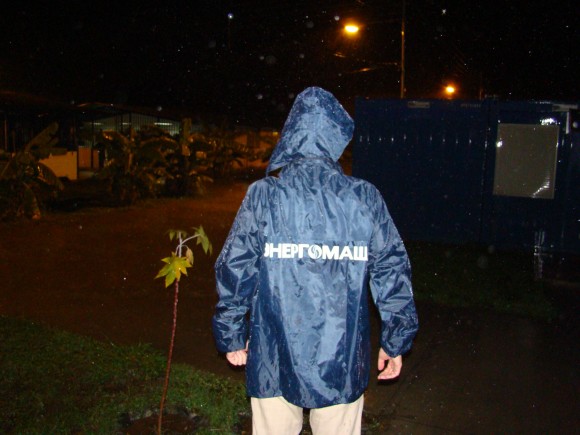



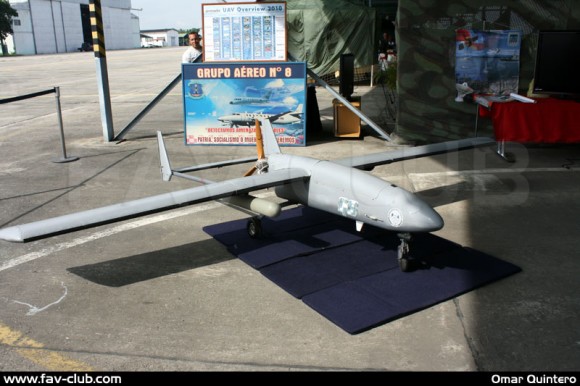

Great article. Thanks.
OK, Venezuela to Miami is about 2000 km, a bit much for a Sin Pene but maybe about right for a Shahab-3. So it’s a credible threat if it is allowed to happen.
Meaning, it gives Chavez a chance to have an otherwise-unimportant part of Venezuela bombed, proving he was right all along about the Evil Yankee Imperialists and giving the Venezuelan people an enemy other than Hugo Chavez to unite against.
Not sure what the Iranians get out of it, though.
Oh, and a nit: The Bofors AT-4 is an unguided light antitank rocket, not a MANPADS (man-portable air defense system).
Lazy me. I didn’t even bother to correct the police report. It’s fixed now, thank you.
Jeffrey: “All I can tell you is that, bad as UAVs might be”…..
Errr, sorry, but what’s so “bad” about UAV’s?
You have to draw a long bow to argue that UAV’s trigger the USA’s own INKSA and, even if it does, unilateral sanctions by the USA is just another day at the office as far as Chavez is concerned.
Jeffrey: “the concern about Iranian ballistic missile exports is the real context for all interest in the shady activities down south.”
But, sorry, what is this “concern” based on?
And why is any of this “shady”?
As far as I can tell those two perjorative words are based on:
1) Our Good Friend Mr. “Western security sources” in Die Welt.
2) Debkafiles, of all places!!!
3) Your scepticism that 6 Iranian UAVs would cost $25million, which is odd considering that would only buy you two-and-a-half IAI Herons.
All of which is rather countered by the fact that the ONLY source who is willing to put their name down – the State Department – says that it’s all nothing but scuttlebutt.
Which is it.
1. The Mohajer UAV is manufactured by Qods Aeronautics Industries, which is a sanctioned entity under UNSC 1737. (Kimia Sanaat is a front company for Qods Aeronautics.) It isn’t accurate to say that these are “unilateral sanctions by the USA.” These are multilateral sanctions by the United Nations Security Council.
2. I am skeptical of the missile claim myself, but it is important to be clear that UAVs are not why this story is in two newspapers. I also find it interesting that sources are willing to hint, but not go further.
Energomash? Rifles? That would be quite a departure for the firm, which seems to specialize in power equipment.
Do you have the original Spanish or Russian that was the source for the “rifles” bit? I’d like to take a look at it.
http://www.energomash.ru/
OK, it appears as if the Belgorod branch of Energomash is mostly a metallic structures outfit, which fits the guy’s travelogue: http://zmkbelgorod.ru/home/
I’m still not clear at all about the rifles.
So Chavez bought several large buildings from Russia which he might put a UAV factory or possibly a rifle factory in. Judging by the video, they now own some large empty buildings containing neither factory.
A UAV is only as good as it’s sensors and datalinks back to base and unless Venezuela got these as well, basically they’re just expensive model airplanes.
The story about Iranian UAVs and ballistic missiles has been around a while. Still there is no mentioning of it in the leaked May 2012 report ( http://www.scribd.com/api_14716_benmoran 3rd document form the top) by the UN panel Experts investigating the UN sanctions on embargo.
This could be partly because the UN sanctions decide ‘that Iran shall not supply (…) any arms or related materiel’ and UAVs are not ‘arms or related materiel’. And the missile story is to vague and unsubstantiated. Or may be because no UN member state has made the effort to report the issue to the panel.
It is an interesting choice by Chavez to get UAVs (and missiles…) from Iran. He could have gotten something better and without doubt legal from China, together with all the other military equipment he receives from that country. Russia, Venezuela’s major arms supplier is not particularly successful in making UAVs, (although it should be able to offer something better than the Mohajer) provides Chavez with pretty good alternatives to ballistic missiles, such as advanced fighter aircraft with guided missiles.
In all, I’d think there would be less risky ways to forge an Axis against evil with Iran not including (potentially) banned military technology transactions.
Regarding the rifles, Venezuela signed in 2006 a contract with a Russian company (I believe Izmash) for the construction of a factory capable of producing 25000 AK103 rifles per year. Energomash presumably builds the factory, but is not the supplier of the rifle technology.
> Regarding the rifles, Venezuela signed in 2006 a contract with a Russian company (I believe Izmash) for the construction of a factory capable of producing 25000 AK103 rifles per year. Energomash presumably builds the factory, but is not the supplier of the rifle technology.
Ah ha. That’s undoubtedly it. Tugging on AK 103 yields these stories and others:
http://www.scoop.co.nz/stories/WO0703/S00423.htm
http://www.eluniversal.com/2006/12/07/en_eco_art_07A812807.shtml
http://en.rian.ru/russia/20070806/70445720.html
I imagine the iranians will be supplying all the necessary sensors and assorted electronics to go with the drones,iran has a pretty modern and capable electronics industry that dates back to the days of the shah
Maracay is the key Venezuelan air base and was also the site of a November 1992 coup that followed by only 9 months the army-backed coup that brought Chavez notoriety and put him in prison for a time. I was living in Venezuela at the time.
That coup interestingly enough was defeated when pilots of F-16s supplied by the US defeated pilots of planes supplied by other countries (Mirages, Tucanos etc).
Since then, the quality of the Venezuelan Air Force seems to have declined, in part no doubt because I’m sure we are not supplying him with aircraft parts and because Chavez has politicized the military and diluted its quality as he has done with other Venezuelan institutions.
UAVs are an obvious alternatives as would be ballistic missiles, although I think Chavez would be more careful about latter.
Chavez is replacing the f16s with russian su30s,at one point he even half jokingly suggested he would pass the f16s on to iran needless to say the us took a dim view of that.Personally I have my doubts about the value of shahabs and seijls to venezuela but short range ballistic and cruise missiles plus artillery rockets make good sense,as for russian drones that was yet one more area of soviet era capability that was left to wither the russians were then forced to purchase israeli drones.I guess when it comes down to it chavez sees iran despite its military techs limitations as a far more reliable and possibly trustworthy partner who together face a common enemy.As for the story of iranian missile bases in cuba and venezuela that would only make any kind of military sense if the iranians had nuclear warheads for those missiles and here I think we are starting to get into bad novel plot territory